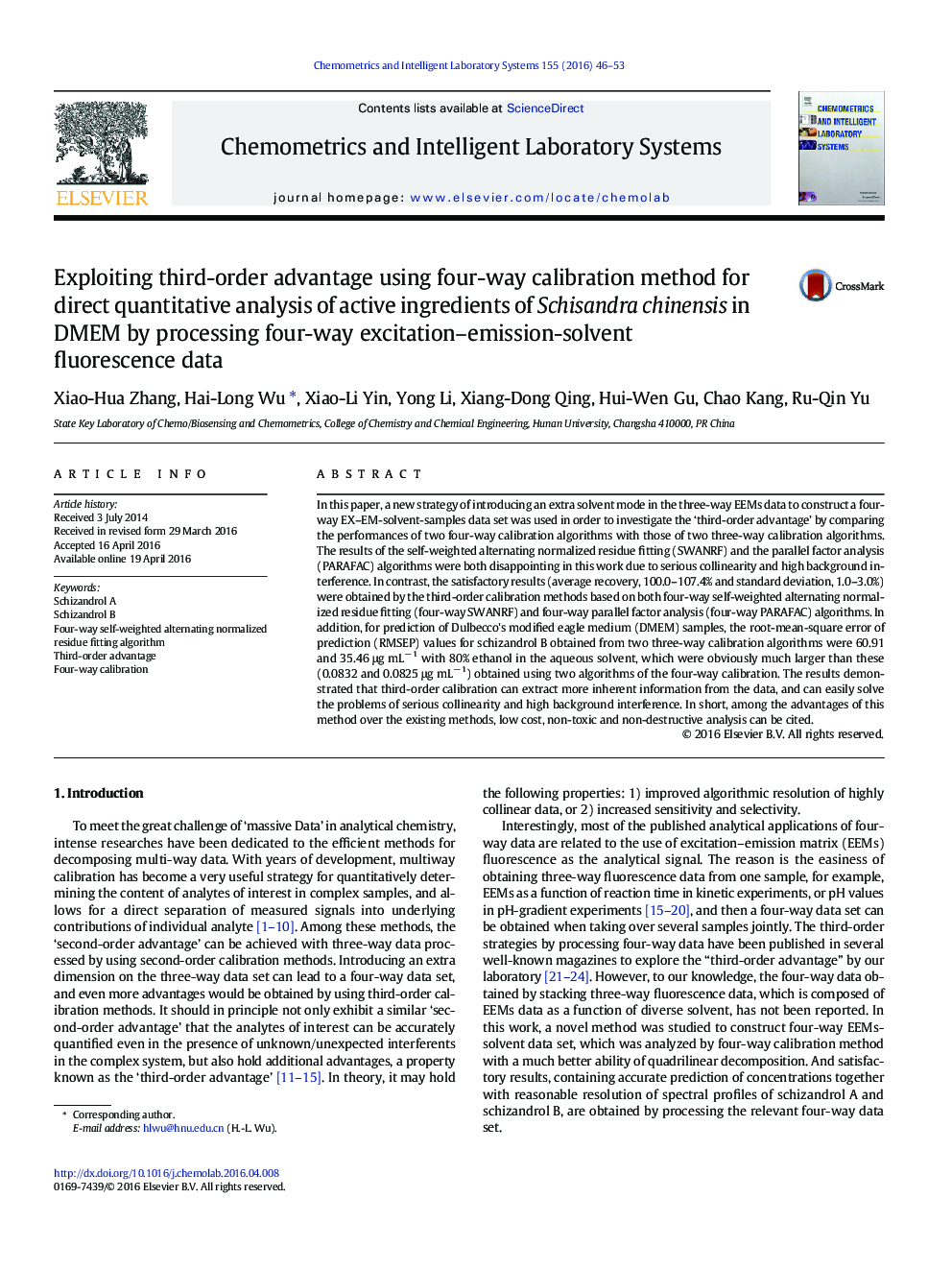| کد مقاله | کد نشریه | سال انتشار | مقاله انگلیسی | نسخه تمام متن |
|---|---|---|---|---|
| 1180197 | 1491524 | 2016 | 8 صفحه PDF | دانلود رایگان |

• The strategy of introducing an extra solvent mode in the three-way EEMs data was first used.
• The ‘third-order advantage’ was studied by processing the EX–EM-solvent-samples data.
• Third-order calibration can resist the influence of serious collinearity and high background.
• The direct quantitative analysis of schizandrol A and schizandrol B in complex DMEM was achieved.
In this paper, a new strategy of introducing an extra solvent mode in the three-way EEMs data to construct a four-way EX–EM-solvent-samples data set was used in order to investigate the ‘third-order advantage’ by comparing the performances of two four-way calibration algorithms with those of two three-way calibration algorithms. The results of the self-weighted alternating normalized residue fitting (SWANRF) and the parallel factor analysis (PARAFAC) algorithms were both disappointing in this work due to serious collinearity and high background interference. In contrast, the satisfactory results (average recovery, 100.0–107.4% and standard deviation, 1.0–3.0%) were obtained by the third-order calibration methods based on both four-way self-weighted alternating normalized residue fitting (four-way SWANRF) and four-way parallel factor analysis (four-way PARAFAC) algorithms. In addition, for prediction of Dulbecco's modified eagle medium (DMEM) samples, the root-mean-square error of prediction (RMSEP) values for schizandrol B obtained from two three-way calibration algorithms were 60.91 and 35.46 μg mL− 1 with 80% ethanol in the aqueous solvent, which were obviously much larger than these (0.0832 and 0.0825 μg mL− 1) obtained using two algorithms of the four-way calibration. The results demonstrated that third-order calibration can extract more inherent information from the data, and can easily solve the problems of serious collinearity and high background interference. In short, among the advantages of this method over the existing methods, low cost, non-toxic and non-destructive analysis can be cited.
Journal: Chemometrics and Intelligent Laboratory Systems - Volume 155, 15 July 2016, Pages 46–53